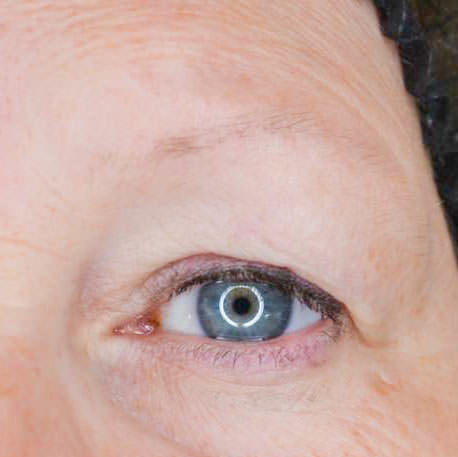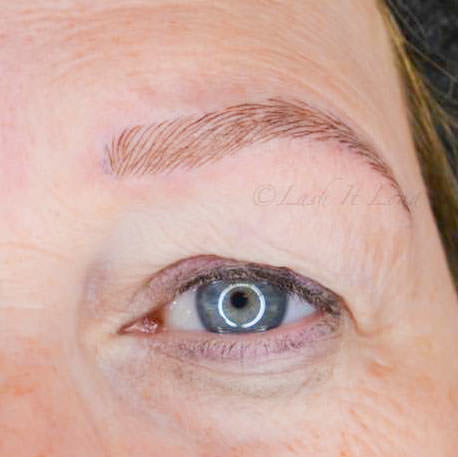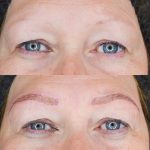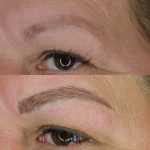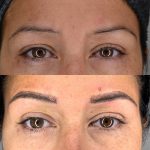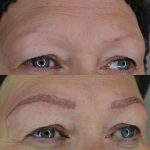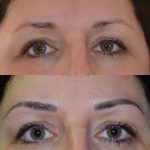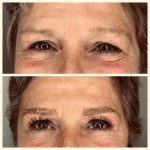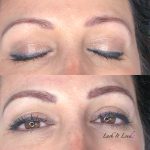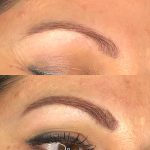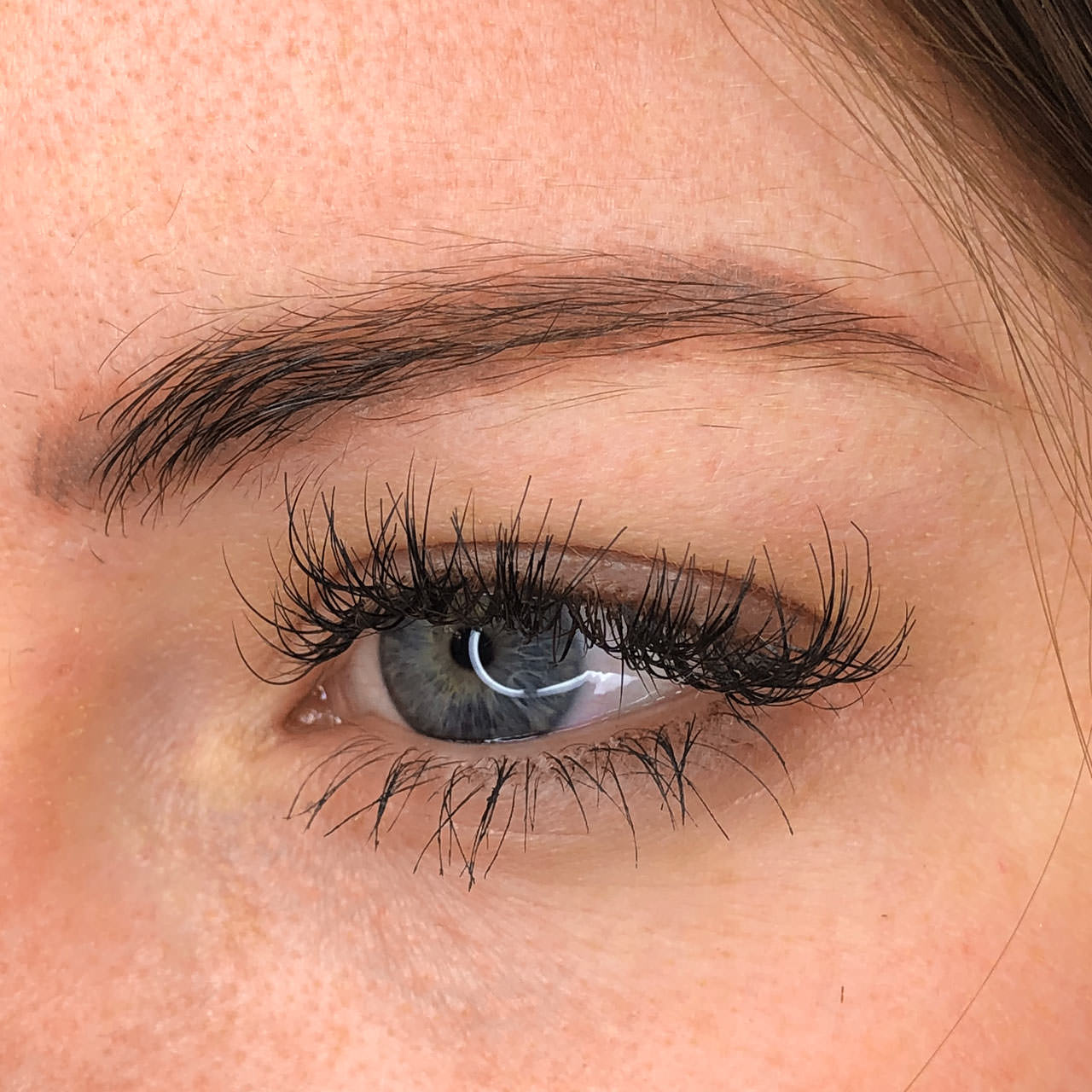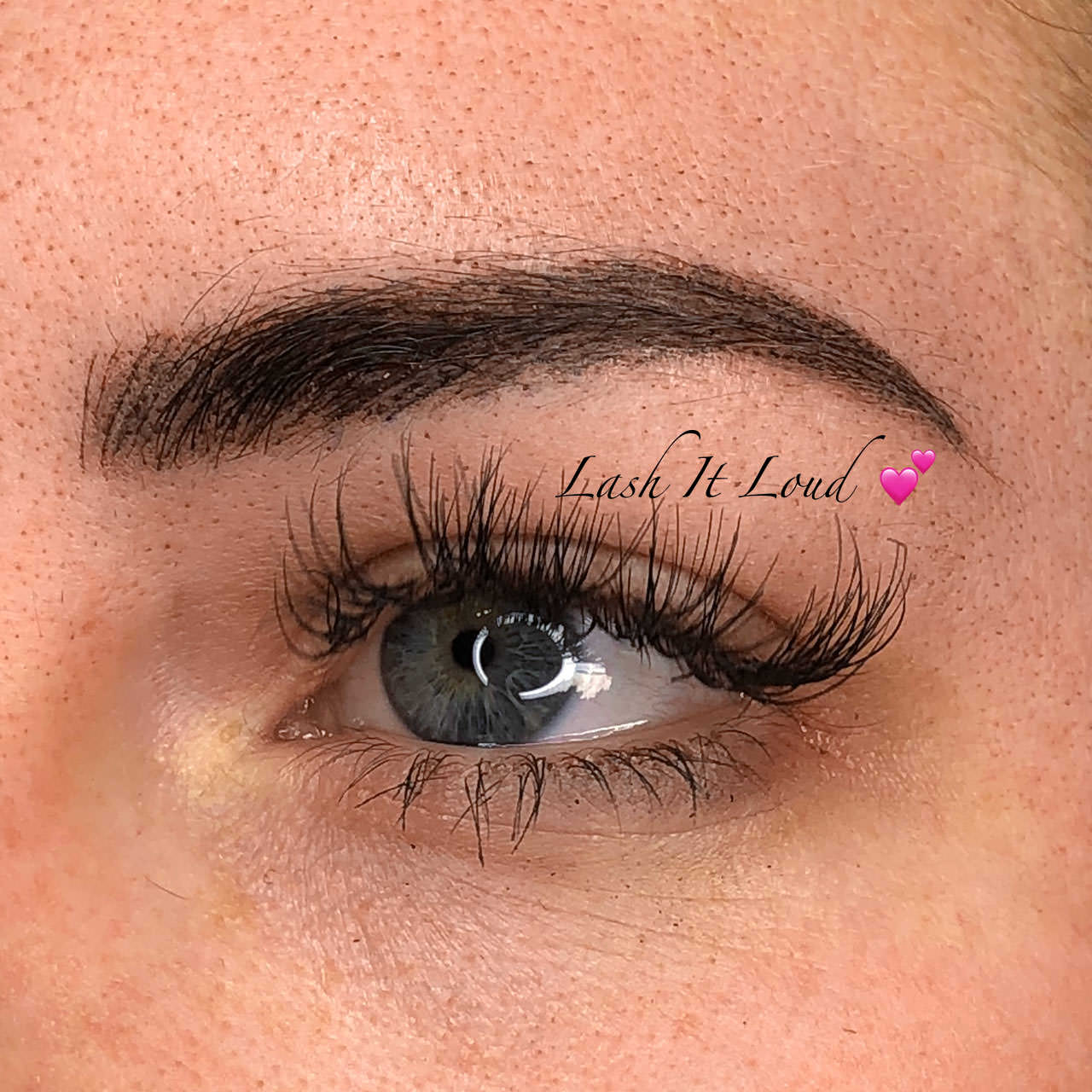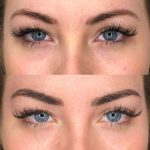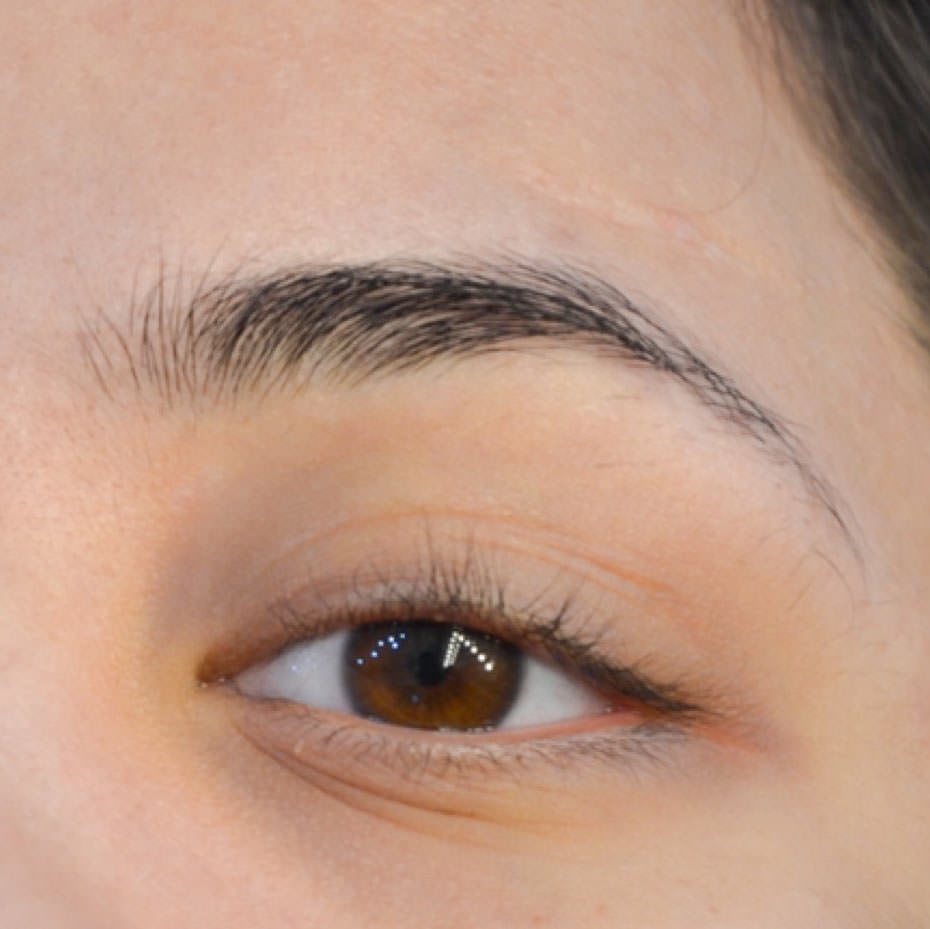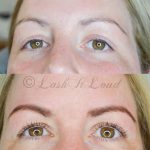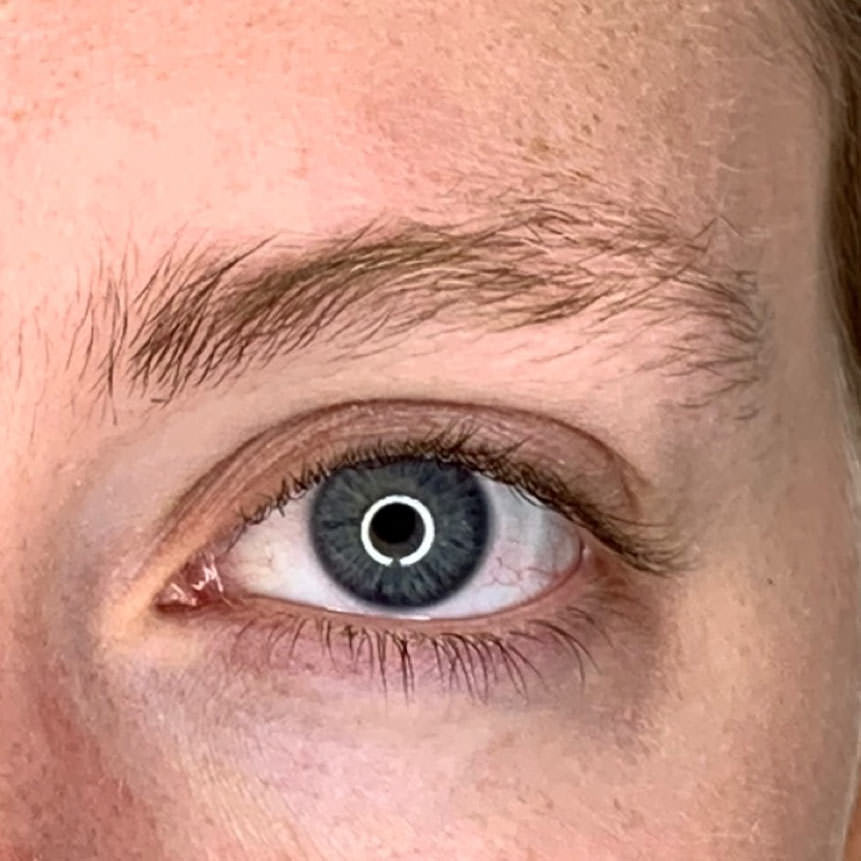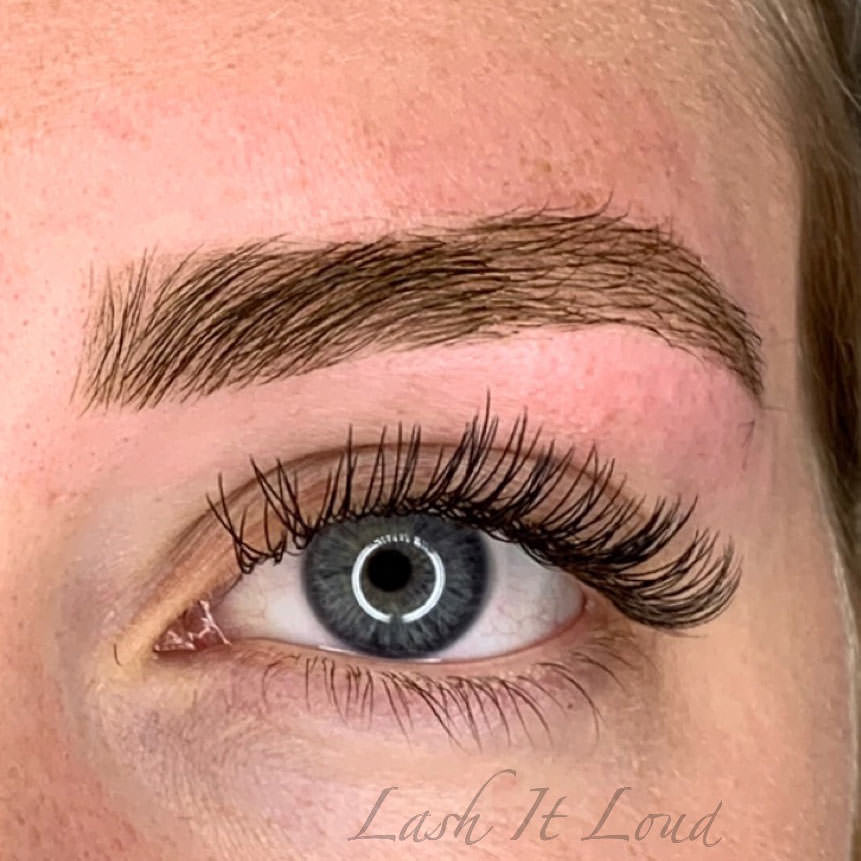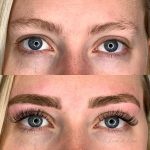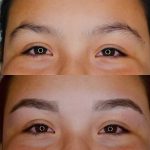Microblading, also known as Eyebrow Embroidery is a procedure categorized under permanent makeup, but unlike traditional cosmetic tattooing, it is less invasive and is considered semi-permanent. Microblading typically lasts 1-3 years, depending on skin type and skincare routine.
The procedure is done by using a hand tool with ultra fine needles and each 'hair' is gently etched into the skin, giving an incredibly natural and realistic look.
Microblading can dramatically correct or fully reconstruct lost eyebrow and is excellent for those wanting to enhance their brows or who have little to no eyebrows, thinning brows from age or over tweezed brows. Pigments used are chosen to match the natural or desired brow color and skin tone will also be taken into consideration.
For the first Microblading session, the entire procedure should take about 2.5-3 hours. During this session, the brow technician will shape and style the client’s brows for client approval. We then follow with pigment color selection. Once the client is satisfied with the choices, we begin the procedure.
The client is to come in for a follow up visit in order to have any minor necessary touch ups. The second Microblading session takes place after 4-6 weeks after the initial session. This session will take approximately 1.5-2 hours to complete.
The eyebrow area will be slightly red after the procedure and color will appear very dark. This is normal for the procedure and part of the healing process. The color will fade by up to 40% as it heals. In the following days, the eyebrows will continue to be dark and you will notice slight scabbing. Do not pick at the scabs as this may damage the skin and the outcome of the microbladed area.
The eyebrows will lighten up in color as it heals. No down time is required after microblading procedure. It takes approximately 7-14 days for the brows to heal over, and about 1 month for the color to fully set in. You'll notice the color is very light right after the two weeks after healing; the skin will have an opaque milky looking quality to it.
This is known as the milk skin and is common in tattooing. This is due to the the tissue still healing from the inside out even though the surface of the skin is healed. True color will reveal itself once healed.
Yes! A touch up session after 4-6 weeks is necessary as everyone heals differently and outcome will vary. Certain areas may not pick up during first session and will need to be refilled. Pigment color may need to be adjusted, brow thickness and more strokes can be added.
Individuals with oily skin often require a deeper shade during the touch up session as the oils tend to lighten the pigment. Most importantly, your touch up session is when we refine your brows to ensure it looks perfect and retains the color for the whole year!
Touch up sessions should not be done earlier than 4 weeks after initial microblading session as pigment color has not fully settled into the skin. Most importantly, this is to prevent scar damage as the tissue requires time to completely heal.
The pain level for the procedure is considered mild to none. Prior to the procedure your brow technician will apply a topical anesthetic to numb the area, and also reapplied during the procedure. Everyone responds differently to anesthetic; depending on the client, the feeling of the procedure has been described as light cat scratches to not feeling anything. Topical anesthetics used may contain lidocaine, prilocaine, benzocaine, tetracaine and epinephrine.
After the procedure, redness and slight swelling in the area is normal. Clients describe the area feeling similar to a light sunburn. Clients can take Tylenol but not aspirin or ibuprofen.
Since microblading pigments are not implanted into the skin as deep as traditional tattoos, the area will naturally fade overtime. Microblading typically lasts 1-3 years, depending on skin type (normal, oily, dry), age (youthful/mature).
Skincare routine will also affect the lasting effect of the pigment: patients who tan, uses products with AHA or Glycolic Acid with fade faster as your skin will resurface faster. Each individual's color retention within the skin will vary. To maintain the brows looking fresh, a touch up is suggested every 12-18 months. Clients can let the microbladed area fade over time, but please note a slight shadow may remain.
In order to achieve the best results, it is best to follow the pre and post care instructions.
Prior to your procedure, clients are advised of the following:
- Avoid alcohol and aspirin/ibuprofen and any vitamins that may thin your blood for 72 hours.
- Avoid tanning so we can assess your natural skin tone.
- No face scrubs or chemical peels at least two weeks prior.
- Feel free to come in with their brow makeup on so our technician can see your every day look you prefer. Reference pictures of shapes and colors of brows are always welcomed. We will then work together to create the perfect brows!
After your procedure, clients MUST follow these instructions:
- Within 2 hours after the procedure, clean brows using a q-tip and lightly moisten with distilled or cooled downed boiling water. Gently wipe away the old healing balm and any lymphatic liquid (clear yellowish liquid) that may have built up. Lightly pat dry with tissue and using a new q-tip, re-apply healing balm to the brows.
- Make sure to apply a light layer of healing balm morning and night to brows for at least 5-7 days.
- Do not over apply healing balm.
- Do not immerse brow area in water for 14 days. When showering, make sure to avoid face area. When cleaning or washing face, make sure to avoid brows and clean around it.
- Do not put makeup on the brow area for a minimum of 10 days. Microbladed area is an open wound, using makeup may cause infections.
- Avoid alcohol and aspirin/ibuprofen and any vitamins that may thin your blood for 24 hours.
- Brow area will feel slightly itchy as it heals and will start to lightly scab over. Do not peel or pick at the scabs as this can affect the outcome and pigmentation.
- Do not go swimming, tanning or into saunas for at least 14 days.
- No face scrubs or chemical peels at least 2 weeks after.
Microblading is not suitable for the following candidates:
- Using Accutane
- Have heart conditions or using heart medications
- Have diabetes (will require a physician's note)
- Have skin disease or irritations
- Have had Botox in the last 2 weeks
- Have gotten a deep tan or chemical peels in the last 2 weeks
- Allergic to lidocaine, prilocaine, benzocaine, tetracaine or epinephrine
- Anyone who has any serious medical conditions may require a physician's note.
- Pregnant or nursing clients who want to microblade can be done at your own discretion. We suggest discussing with your doctor first. Microblading is still considered a tattoo, and just like with wine or sushi consumption, it is a personal choice to do so during this period.
We take all proper precautions for a safe session by using sterilized equipment, new needles and in a sanitized environment. Should clients follow our pre and post care instructions, there should be minimal risks or complications . Although allergic reactions to the pigments are rare, it could be possible for certain individuals. We suggest a pigment patch test for individuals who have high skin sensitivities or are sensitive to:
- Topical makeup products
- Gold, silver and nickel
- Hair dyes
Patch tests should be performed 5-7 days prior.

